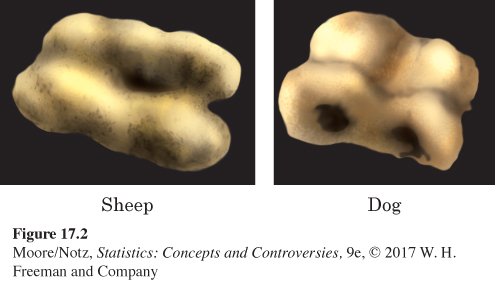The ancient history of chance
Randomness is most easily noticed in many repetitions of games of chance: rolling dice, dealing shuffled cards, spinning a roulette wheel. Chance devices similar to these have been used from remote antiquity to discover the will of the gods. The most common method of randomization in ancient times was “rolling the bones”—that is, tossing several astragali. The astragalus (Figure 17.2) is a six-sided animal heel bone that, when thrown, will come to rest on one of four sides (the other two sides are rounded). Cubical dice, made of pottery or bone, came later, but even dice existed before 2000 B.C. Gambling on the throw of astragali or dice is, compared with divination, almost a modern development. There is no clear record of this vice before about 300 B.C. Gambling reached flood tide in Roman times, then temporarily receded (along with divination) in the face of Christian displeasure.

Chance devices such as astragali have been used from the beginning of recorded history. Yet none of the great mathematicians of antiquity studied the regular pattern of many throws of bones or dice. Perhaps this is because astragali and most ancient dice were so irregular that each had a different pattern of outcomes. Or perhaps the reasons lie deeper, in the classical reluctance to engage in systematic experimentation.
Professional gamblers, who are not as inhibited as philosophers and mathematicians, did notice the regular pattern of outcomes of dice or cards and tried to adjust their bets to the odds of success. “How should I bet?” is the question that launched mathematical probability. The systematic study of randomness began (we oversimplify, but not too much) when seventeenth-century French gamblers asked French mathematicians for help in figuring out the “fair value” of bets on games of chance. Probability theory, the mathematical study of randomness, originated with Pierre de Fermat and Blaise Pascal in the seventeenth century and was well developed by the time statisticians took it over in the twentieth century.